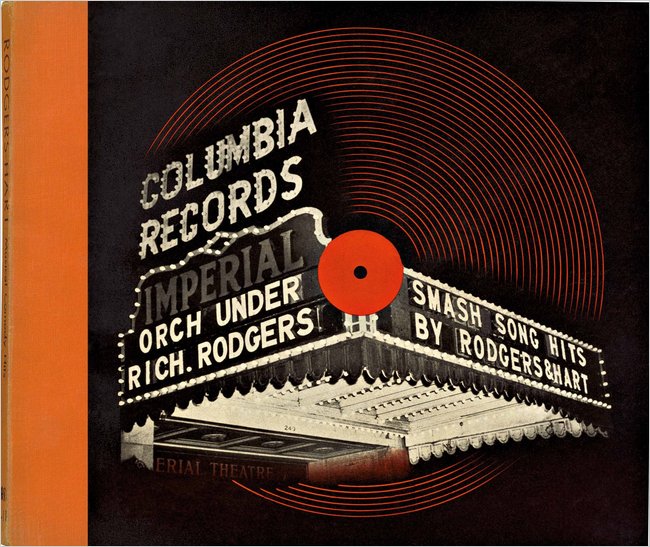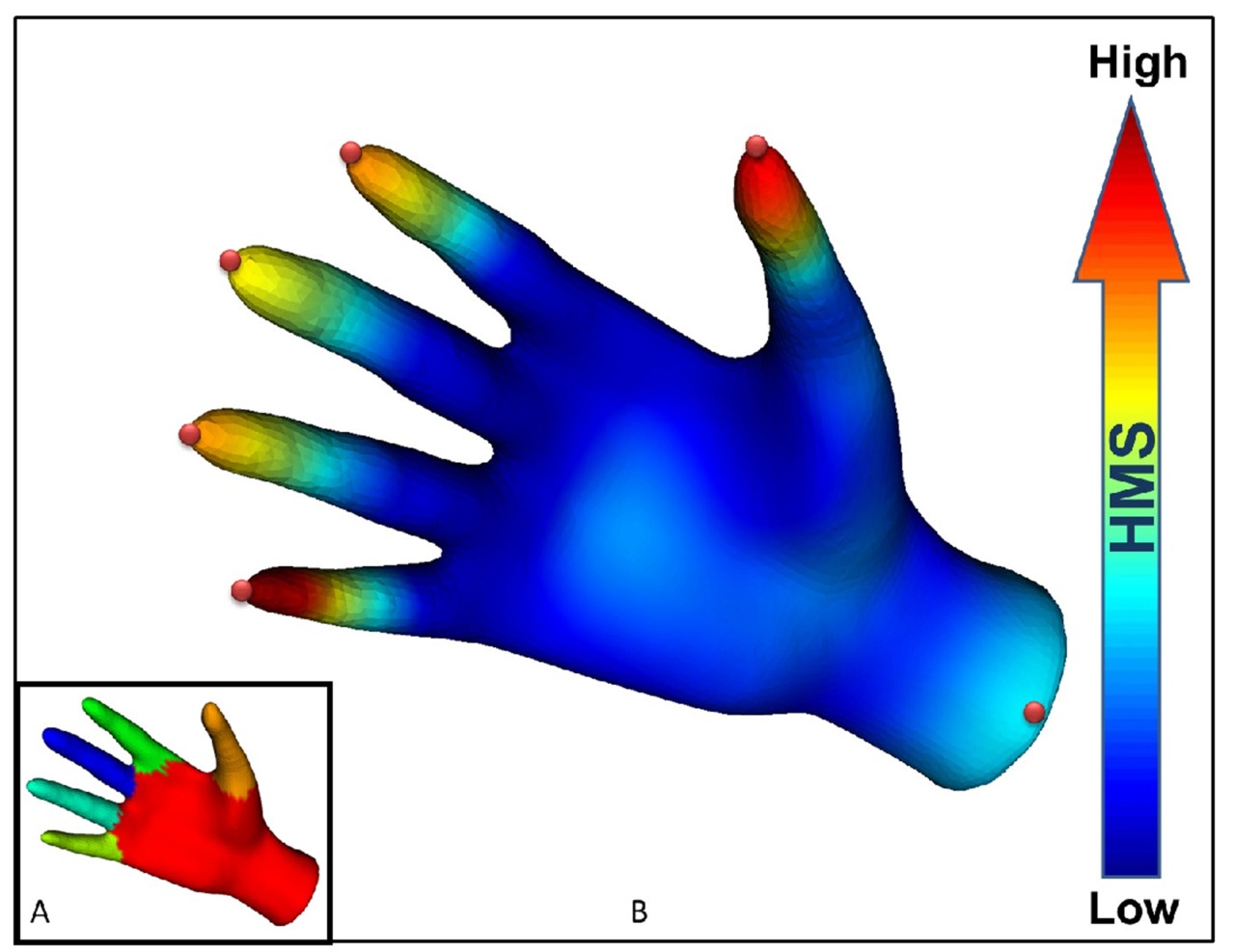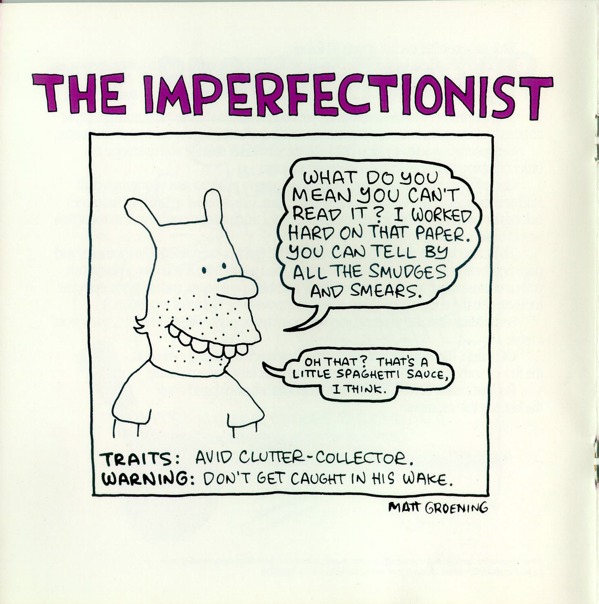Links and write-ups about beautiful things from around the web!
-
RIP Alex Steinweiss, Creator of Album Covers

I’ve wondered where the idea of music albums as discrete packaged works of art came from, and now I know. From the New York Times: Alex Steinweiss, Originator of Artistic Album Covers, Dies at 94
“The way records were sold was ridiculous,” Mr. Steinweiss said in a 1990 interview. “The covers were brown, tan or green paper. They were not attractive, and lacked sales appeal.” Despite concern about the added costs, he was given the approval to come up with original cover designs.
His first cover, for a collection of Rodgers and Hart songs performed by an orchestra, showed a high-contrast photo of a theater marquee with the title in lights. The new packaging concept was a success: Newsweek reported that sales of Bruno Walter’s recording of Beethoven’s “Eroica” symphony increased ninefold when the album cover was illustrated.
Mr. Steinweiss also created a distinctive handwriting script that he used on many of his album covers, which came to be known as the Steinweiss Scrawl (recently resurrected as the font Steinweiss Script by designer Michael Doret).
Mr. Steinweiss said he was destined to be a commercial artist. In high school he marveled at his classmates who “could take a brush, dip it in some paint and make letters,” he recalled. “So I said to myself, if some day I could become a good sign painter, that would be terrific!“
More good information about his career and innovations (including diagrams of his LP packaging) are available on this page about his work for the Remington record label.
-
Anonymizing the photographer
Via New Scientist, research into an image processing technique designed to mask the actual physical position of the photographer, by creating an interpolated photograph from an artificial vantage point:
The technology was conceived in September 2007, when the Burmese junta began arresting people who had taken photos of the violence meted out by police against pro-democracy protestors, many of whom were monks. “Burmese government agents video-recorded the protests and analysed the footage to identify people with cameras,” says security engineer Shishir Nagaraja of the Indraprastha Institute of Information Technology in Delhi, India. By checking the perspective of pictures subsequently published on the internet, the agents worked out who was responsible for them. …
The images can come from more than one source: what’s important is that they are taken at around the same time of a reasonably static scene from different viewing angles. Software then examines the pictures and generates a 3D “depth map” of the scene. Next, the user chooses an arbitrary viewing angle for a photo they want to post online.
Interesting stuff, but lots to contemplate here. Does an artificially-constructed photograph like this carry the same weight as a “straight” digital image? How often is an individual able to round up a multitude of photos taken of the same scene at the same time, without too much action occurring between each shot? What happens if this technique implicates a bystander who happened to be standing in the “new” camera’s position?
-
The Phantom Tollbooth

I’ve been re-reading Norton Juster’s The Phantom Tollbooth, one of my favorite books from when I was a kid, and it still holds up. I remember really enjoying it for its wit and wordplay (even if a lot of it whizzed over my head), but the point of the story, in which Milo learns about Wisdom (including false understandings of such) and the dangers lurking in the Mountains of Ignorance, resonates much more strongly as an adult.
“Because, my young friends,” he muttered sourly, “what could be more important than doing unimportant things? If you stop to do enough of them, you’ll never get to where you’re going.” He punctuated his last remark with a villainous laugh.
“Then you must―” gasped Milo.
“Quite correct!” he shrieked triumphantly. “I am the Terrible Trivium, demon of petty tasks and worthless jobs, ogre of wasted effort, and monster of habit.”
“But why do only unimportant things?” asked Milo, who suddenly remembered how much time he spent each day doing them.
“Think of all the trouble it saves,” the man explained, and his face looked as if he’d be grinning an evil grin―if he could grin at all. “If you only do the easy and useless jobs, you’ll never have to worry about the important ones which are so difficult. You just won’t have the time. For there’s always something to do to keep you from what you really should be doing…”
And with that, I’d better get off Tumblr!
-
Gold by Evan Roth
[Video no longer available]
Gold, an acrylic + light sculpture by Evan Roth of the Graffiti Research Lab, capturing the marker movement of Jean-Michel Basquiat’s handwriting. The way the projected light spirals through the acrylic is beautiful!
-
Simulated Heat Mapping for Computer Vision

A new approach to computer vision object recognition: simulated heat-mapping:
The heat-mapping method works by first breaking an object into a mesh of triangles, the simplest shape that can characterize surfaces, and then calculating the flow of heat over the meshed object. The method does not involve actually tracking heat; it simulates the flow of heat using well-established mathematical principles, Ramani said. …
The method accurately simulates how heat flows on the object while revealing its structure and distinguishing unique points needed for segmentation by computing the “heat mean signature.” Knowing the heat mean signature allows a computer to determine the center of each segment, assign a “weight” to specific segments and then define the overall shape of the object. …
“A histogram is a two-dimensional mapping of a three-dimensional shape,” Ramani said. “So, no matter how a dog bends or twists, it gives you the same signature.”
In other words, recognizing discrete parts (like fingers or facial features) of an object in front of the camera should be much more accurate with this approach than with older techniques like simple edge detection. Uses for real-time recognition are apparent (more accurate Dance Central!), but it seems like this would also be a boon for character animation rigging?
(Via ACM TechNews)
-
FaceOSC Font-Face Typography
FaceOSC
+
RoboFab’s Glyph Math
http://www.robofab.org
+
Vanilla
http://code.typesupply.com
+
Ideal Sans
http://www.typography.com/fonts/font_overview.php?productLineID=100042The ofxFaceTracker openFrameworks add-on + typgraphy = interestingly literal idea of exploring typefaces…
(Via Hoefler & Frere-Jones)
-
Matt Groening Apple Ads

One of a handful of cartoons that Matt Groening created back in the late 80’s for a Macintosh ad brochure targeting new college students. Apart from Life in Hell’s Bongo, I think the other drawings are original characters? Just noticed this in the fine print on the back cover:
The characters in this brochure are fictional, and any similarities to actual persons, friends, or significant others is purely coincidental.
Whew, glad they cleared that up!
-
Nyan Cat Progress Bar for Windows

Nyan Cat Progress Bar, replaces the standard Windows progress bars in Explorer. Oh, Internet!
(Via Cal Henderson)
-
Herman Melville on the Nature of Color
From Moby Dick, chapter 42, “The Whiteness of the Whale”:
Is it that by its indefiniteness it shadows forth the heartless voids and immensities of the universe, and thus stabs us from behind with the thought of annihilation, when beholding the white depths of the milky way? Or is it, that as in essence whiteness is not so much a color as the visible absence of color, and at the same time the concrete of all colors; is it for these reasons that there is such a dumb blankness, full of meaning, in a wide landscape of snows – a colorless, all-color of atheism from which we shrink? And when we consider that other theory of the natural philosophers, that all other earthly hues – every stately or lovely emblazoning – the sweet tinges of sunset skies and woods; yea, and the gilded velvets of butterflies, and the butterfly cheeks of young girls; all these are but subtile deceits, not actually inherent in substances, but only laid on from without; so that all deified Nature absolutely paints like the harlot, whose allurements cover nothing but the charnel-house within; and when we proceed further, and consider that the mystical cosmetic which produces every one of her hues, the great principle of light, for ever remains white or colorless in itself, and if operating without medium upon matter, would touch all objects, even tulips and roses, with its own blank tinge – pondering all this, the palsied universe lies before us a leper; and like wilful travellers in Lapland, who refuse to wear colored and coloring glasses upon their eyes, so the wretched infidel gazes himself blind at the monumental white shroud that wraps all the prospect around him. And of all these things the Albino Whale was the symbol. Wonder ye then at the fiery hunt?
-
Glados Treadmill
If GLaDOS is running your treadmill, I suggest finding a new gym.
(Via GameSetWatch)
